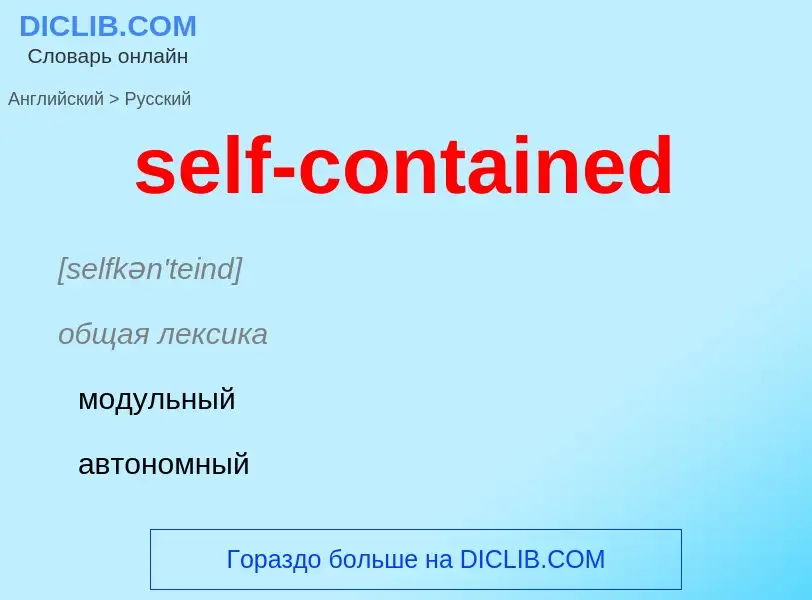Vertaling en analyse van woorden door kunstmatige intelligentie ChatGPT
Op deze pagina kunt u een gedetailleerde analyse krijgen van een woord of zin, geproduceerd met behulp van de beste kunstmatige intelligentietechnologie tot nu toe:
- hoe het woord wordt gebruikt
- gebruiksfrequentie
- het wordt vaker gebruikt in mondelinge of schriftelijke toespraken
- opties voor woordvertaling
- Gebruiksvoorbeelden (meerdere zinnen met vertaling)
- etymologie
self-contained - vertaling naar russisch
[selfkən'teind]
общая лексика
модульный
автономный
замкнутый
самостоятельный
нефтегазовая промышленность
автономный (о буровом основании, буровой установке)
прилагательное
общая лексика
сдержанный
замкнутый
необщительный
полный
законченный
изолированный
отдельный (о доме, квартире)
самообслуживающийся
не требующий вспомогательных механизмов
самостоятельный
необщительный, замкнутый
выдержанный, хорошо владеющий собой
военное дело
отдельный
способный к самостоятельным действиям
снабженный всем необходимым
техника
независимый
автономный
независимый, автономный
Definitie
Wikipedia

Arcology, a portmanteau of "architecture" and "ecology", is a field of creating architectural design principles for very densely populated and ecologically low-impact human habitats.
The term was coined in 1969 by architect Paolo Soleri, who believed that a completed arcology would provide space for a variety of residential, commercial, and agricultural facilities while minimizing individual human environmental impact. These structures have been largely hypothetical, as no arcology, even one envisioned by Soleri himself, has yet been built.
The concept has been popularized by various science fiction writers. Larry Niven and Jerry Pournelle provided a detailed description of an arcology in their 1981 novel Oath of Fealty. William Gibson mainstreamed the term in his seminal 1984 cyberpunk novel Neuromancer, where each corporation has its own self-contained city known as arcologies. More recently, authors such as Peter Hamilton in Neutronium Alchemist and Paolo Bacigalupi in The Water Knife explicitly used arcologies as part of their scenarios. They are often portrayed as self-contained or economically self-sufficient.


![[[Arcosanti]] city [[Arcosanti]] city](https://commons.wikimedia.org/wiki/Special:FilePath/Arcosanti Cliff View.png?width=200)
![[[Begich Towers]] [[Begich Towers]]](https://commons.wikimedia.org/wiki/Special:FilePath/Begich Towers, Whittier, Alaska (cropped).jpg?width=200)
![[[McMurdo Station]] [[McMurdo Station]]](https://commons.wikimedia.org/wiki/Special:FilePath/McMurdo Station.jpg?width=200)

